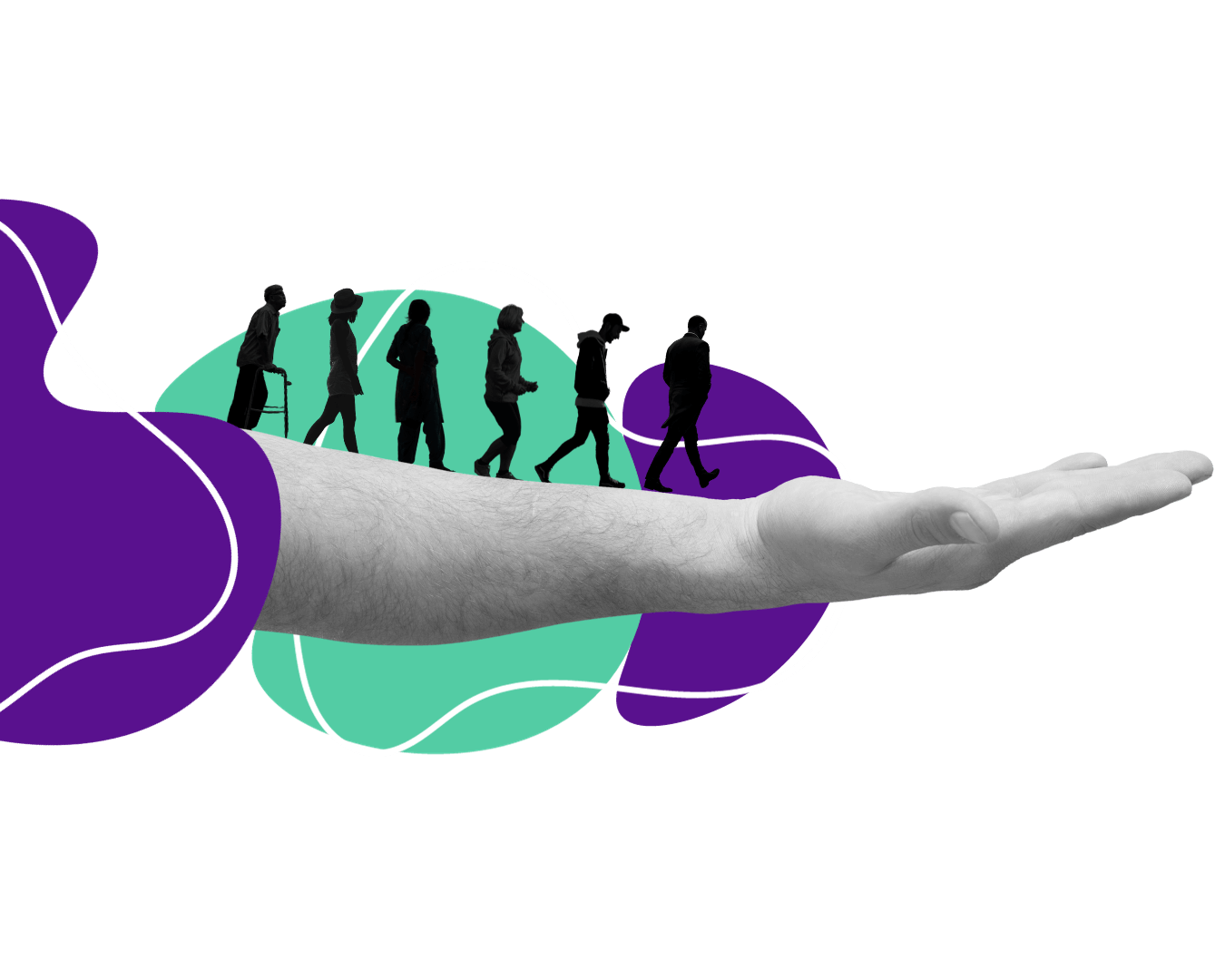Supporting older workers: a focus on Osteoporosis in the workplace
An article a few weeks ago jumped off the page and smacked me between the eyes! “1.9 million days taken off work as a result of osteoporosis related fractures”, read the headline.
That’s a lot of absence from work. I’m curious why I’ve never read about the impact of osteoporosis in the workplace. Is this due in part to the ‘invisibility cloak’ that you put on once you clock into 50 years of age? As osteoporosis, for the most part, affects older workers. I have, in fact, experienced the invisibility cloak myself, so I know it’s real! A friend even joked that there’s so much you can get away with once you become invisible in society! (let your imagination run wild on that one 😊)
We read articles about workplace stress, mental health, depression, and anxiety but this topic is a first for me. It led me to wondering – rather than wait for the government to support, is there anything that we can do to support, as employers and HR teams?
The answer is a big loud ‘yes’, and it’s a relatively easy win!

Get people moving!
What every employer can do is, get people moving! Load/weight bearing exercise is one of the best ways to minimise osteoporosis….
Encourage people to:
- use the stairs and get out of the lifts a bit more often
- park further away from the front door
- stop emailing colleagues a few feet away and instead get up and go and talk to them
- reduce home working (shown to reduce steps each week by about 3500)
- move under desk bins or printers further away
- walk outside during breaks
- set up a walking club, have a ‘steps’ competition
- allow dogs at work as walking them is great exercise
- use standing desks
- introduce walk to work incentives
- have short meetings standing up or walking outside
- make regular movement throughout the day a part of your workplace culture … move, move, move!
“People can pay into their ‘bone bank’ through weight-bearing exercise, good calcium levels and sufficient vitamin D to prevent osteoporosis and protect their independence in later life.” Royal Osteoporosis Society
Getting people moving is a gift you can give everyone!
An optional extra is to provide free milk, milkshakes, a cheeseboard in the fridge and almonds I believe are a pretty good source of calcium too.
We don’t recommend you provide Vitamin D tablets though, as it’s always best to leave the discussions about tablets and medication to the doctors and whilst we don’t recommend you create a smelly workplace as that can be an employee relations nightmare, we wanted to remind you that oily fish and egg yolks are a good source of vitamin D.
But aside from encouraging loads more movement, education is always a good option. So here are some facts from the website of the Royal Osteoporosis Society:
What is osteoporosis
- Osteoporosis weakens bones and develops slowly over a number of years
- Osteoporosis affects over three million people in the UK. (Around half a million are thought to still be in work)
- Every minute of every day and night someone breaks a bone as a result of osteoporosis!
- Osteopenia is a stage before osteoporosis and may be diagnosed after a bone density scan shows a lower than average bone density however if the correct preventative actions are taken, osteoporosis can be prevented in some cases.
- People in lower income households are more seriously affected
- A low BMI can be a cause of developing osteoporosis alongside smoking and drinking alcohol.
Experiencing osteoporosis
- 26% of sufferers live with long term pain. Only 56% are confident about how to manage that pain
- 71% have suffered height loss and/or curvature of the spine
- 52% say their condition impacts their ability to use public transport, drive and get around
- 51% have stopped or reduced their hobbies and 47% cut back on social activities
- 17% have scaled back work by reducing hours or retired early from work
- The most common fractures are wrist, hip and spinal bones
Women and osteoporosis
- 25% women suffer 3 + fractures before osteoporosis is diagnosed
- Women lose bone rapidly in the few years after the menopause (why has no one ever told me that?)
Osteoporosis is known as the ‘silent disease’ due to under diagnosis, under treatment and low levels of public awareness of the importance of bone health to growing older healthily.
However, getting your workforce moving, making it part of your culture means that every single person across your organisation wins, as movement is good for everyone, fewer absences, muscle strains, weight related illnesses, fewer cricked necks, reduced stress and anxiety and the list goes on …. make ‘move, move, move’ your new mission!
From Jaluch
Practical, pragmatic, real world training for staff and managers – wellbeing, diversity, management, resilience, psychological safety, emotional intelligence, managing absence. Check out all of our training here.
Got anyone with aches and pains who it’s worth investing in for a quick return to full health? Get some one-to-one online support.
Want to try before you buy? Why not attend our next open workshop on Trust and Psychological Safety – Friday November 10th . Tickets are £50 for our HR Blast readers, normally £180.
If you want a bit of fun, play our trust and psychological safety game. Top of the leaderboard on 31st October will receive a £10 Amazon voucher! Make sure you leave your name/company on the leaderboard and email us if you make the top spot!
📩 If you liked this article and want more, sign-up to receive free fortnightly updates from us.
Disclaimer: The information contained within this article is for general guidance only and represents our understanding of employment and associated law and employee relations issues as at the date of publication. Jaluch Limited, or any of its directors or employees, cannot be held responsible for any action or inaction taken in reliance upon the contents. Specific advice should be sought on all individual matters.
AUTHOR DETAILS

